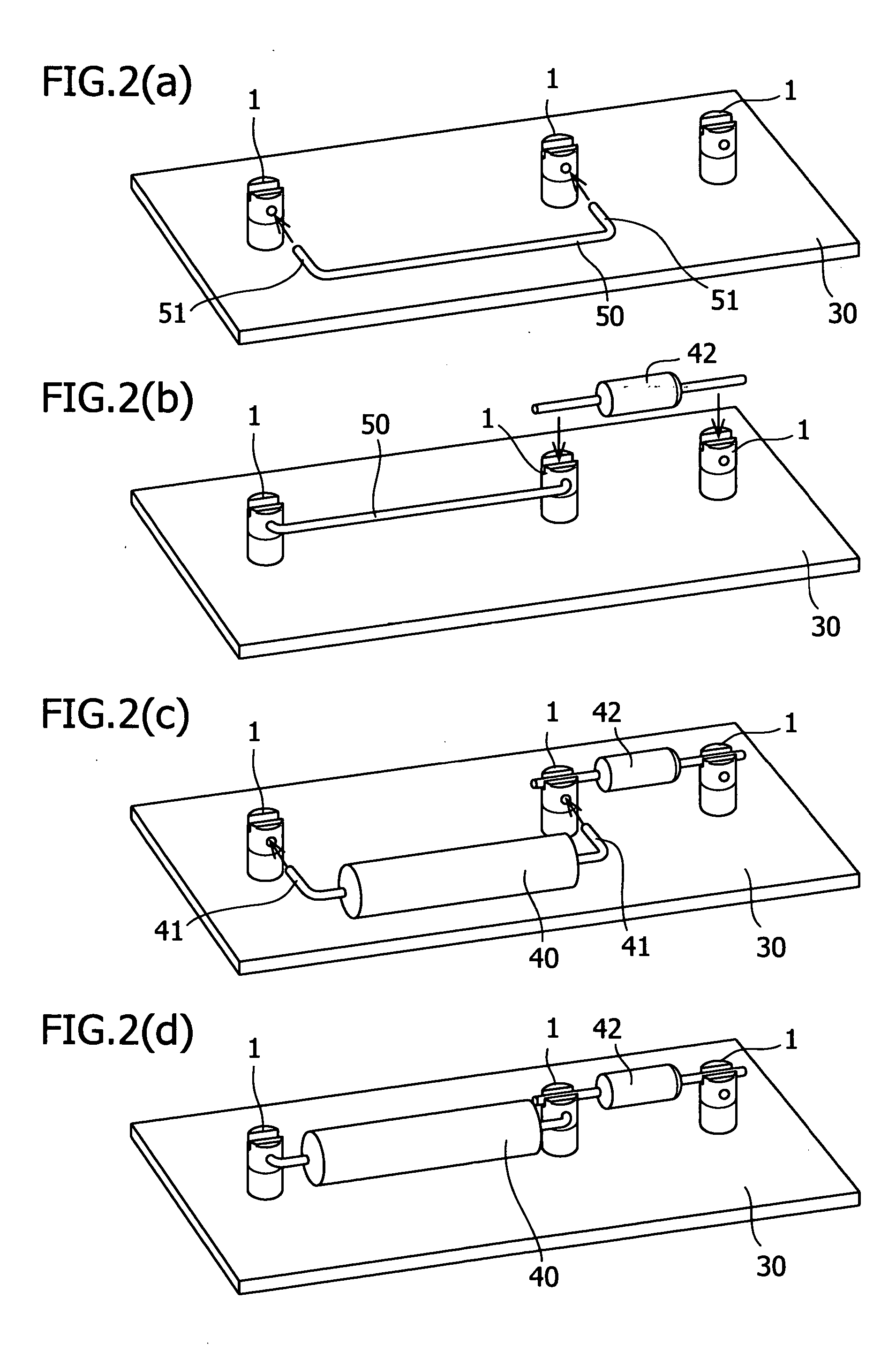PTFE stud for ultrahigh-value resistor and method therefor
a technology of polytetrafluoroethylene and resistor, which is applied in the direction of coupling contact members, fixed connections, relays, etc., can solve the problems of internal structure susceptible to thermal stress, resistance instability, and resistance error, so as to prevent thermal shock from being applied, simplify the assembly process, and prevent thermal shock
- Summary
- Abstract
- Description
- Claims
- Application Information
AI Technical Summary
Benefits of technology
Problems solved by technology
Method used
Image
Examples
Embodiment Construction
[0021] A PTFE (polytetrafluoroethylene) stud according to an embodiment of the present invention will be described below with reference to FIGS. 1A to 1C and 2A to 2D. FIG. 1A is a front view of a PTFE stud according to the present invention, FIG. 1B is a side view thereof, and FIG. 1C is a top view thereof. FIGS. 2A to 2D show processes for mounting PTFE studs on a substrate and then attaching an ultrahigh-value resistor to the PTFE studs.
[0022] As shown in FIGS. 1A to 1C, a PTFE stud 1 is formed to have a substantially-cylindrical shape along a central axis 2 and is constituted by a first portion 10 formed of PTFE material and a second portion 20 formed of brass. The first portion 10 and the second portion 20 have a face 10a and a face 20a, respectively, which are perpendicular to the central axis 2. The first portion 10 and the second portion 20 are separated from each other at the faces 10a and 20a and are combined together such that the faces 10a and 20a are in contact with ea...
PUM
 Login to View More
Login to View More Abstract
Description
Claims
Application Information
 Login to View More
Login to View More - R&D
- Intellectual Property
- Life Sciences
- Materials
- Tech Scout
- Unparalleled Data Quality
- Higher Quality Content
- 60% Fewer Hallucinations
Browse by: Latest US Patents, China's latest patents, Technical Efficacy Thesaurus, Application Domain, Technology Topic, Popular Technical Reports.
© 2025 PatSnap. All rights reserved.Legal|Privacy policy|Modern Slavery Act Transparency Statement|Sitemap|About US| Contact US: help@patsnap.com



